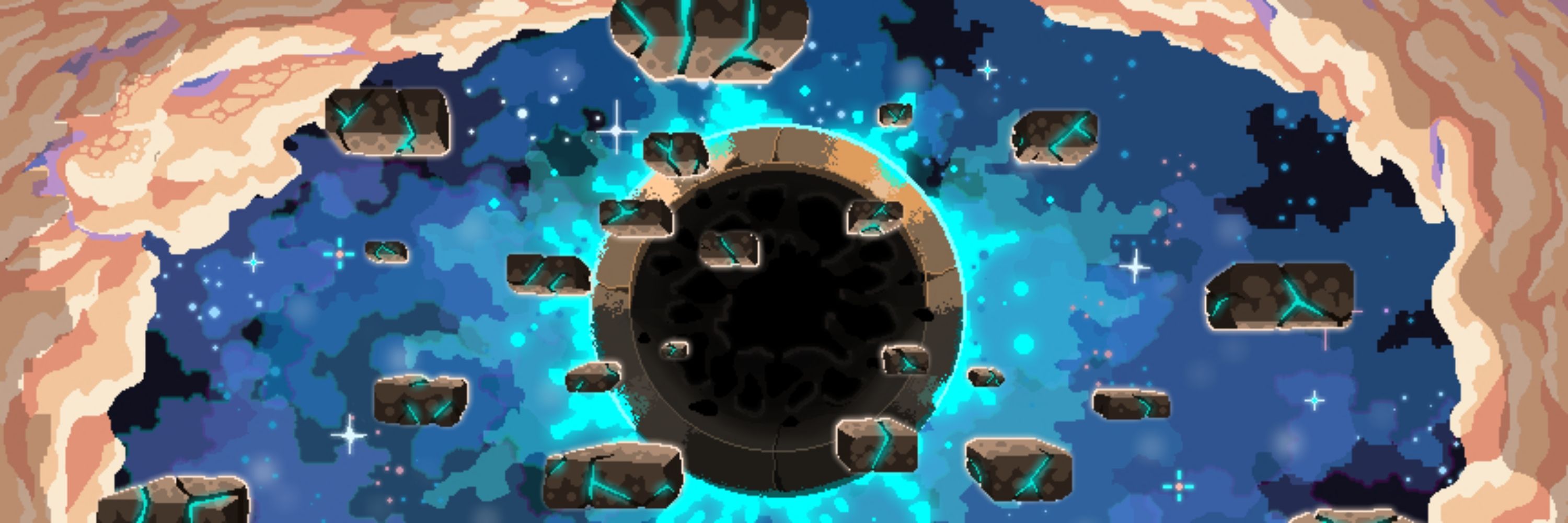
Join us to explore procedurally generated levels, chaotic attacks and epic elemental battles 🔥
This is still WIP...
FREEZING!! 🥶❄️
They never saw it coming
#gamedev #indiedev #roguelike #pixelart #madewithunity #indiegame #devlog #SourcEGame
This is still WIP...
Is there a chance there's an open spot?
A small indie team with a pixel art rogulike here 😊
Is there a chance there's an open spot?
A small indie team with a pixel art rogulike here 😊
Just wondering if there's any chance there's a spot left for a small indie team working with Unity?
We'd love to join the starter pack too! 🙂
Just wondering if there's any chance there's a spot left for a small indie team working with Unity?
We'd love to join the starter pack too! 🙂
Something about it just clicks 😄
Something about it just clicks 😄
I think fable did something similar for me.
I had played a lot of games before it but something about it just hooked me and triggered the passion to create
I think fable did something similar for me.
I had played a lot of games before it but something about it just hooked me and triggered the passion to create
linear interpolation is just the eq:
Given the line defined by
A = (x₁, y₁)
B = (x₂, y₂)
The interpolated point is:
P(t) = ((1 − t)x₁ + tx₂, (1 − t)y₁ + ty₂)
Where t is the value we’re interpolating for.
🧠 Bonus:
Know how to extend this to 3D? Drop it in the comments 👇
linear interpolation is just the eq:
Given the line defined by
A = (x₁, y₁)
B = (x₂, y₂)
The interpolated point is:
P(t) = ((1 − t)x₁ + tx₂, (1 − t)y₁ + ty₂)
Where t is the value we’re interpolating for.
🧠 Bonus:
Know how to extend this to 3D? Drop it in the comments 👇
Cause it preserves the distances ratio between input and output.
Meaning, if an input is twice as far as the first input
(like 0.3 & 0.6), the res points on the line will be twice as far too.
This is why "constant speed"
(Simplifying a lot here, but that’s the idea!)
Cause it preserves the distances ratio between input and output.
Meaning, if an input is twice as far as the first input
(like 0.3 & 0.6), the res points on the line will be twice as far too.
This is why "constant speed"
(Simplifying a lot here, but that’s the idea!)
Mathf.Lerp(startPos, endPos, value)
places an object as described, start and end defining the line.
Pro tip Using values greater than 1 or less than 0 is called extrapolation -
a fancy word for continuing the line beyond its original bounds,
but still in the same direction
Mathf.Lerp(startPos, endPos, value)
places an object as described, start and end defining the line.
Pro tip Using values greater than 1 or less than 0 is called extrapolation -
a fancy word for continuing the line beyond its original bounds,
but still in the same direction
This keeps things simple - it represents the position
along the line as a fraction.
0 is the starting point
0.5 is the middle
1 is the end
This keeps things simple - it represents the position
along the line as a fraction.
0 is the starting point
0.5 is the middle
1 is the end
It’s a way to map a number (a 1 dimensional value)
to a pos on a straight line.
It helps us convert a value like running time
into a gradually advancing pos along a path in the scene.
A more specific example?
Moving an object in a straight line at a constant speed!
It’s a way to map a number (a 1 dimensional value)
to a pos on a straight line.
It helps us convert a value like running time
into a gradually advancing pos along a path in the scene.
A more specific example?
Moving an object in a straight line at a constant speed!
I come back from each GDC with more friends and always have a blast seeing the amazing collaborations
And of course followed back!
Helping each other is the best way to grow and learn
I come back from each GDC with more friends and always have a blast seeing the amazing collaborations
And of course followed back!
Helping each other is the best way to grow and learn

